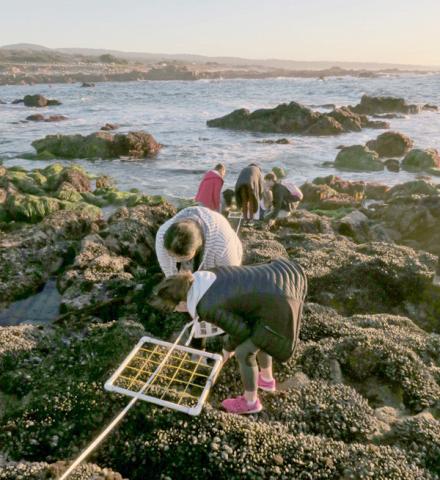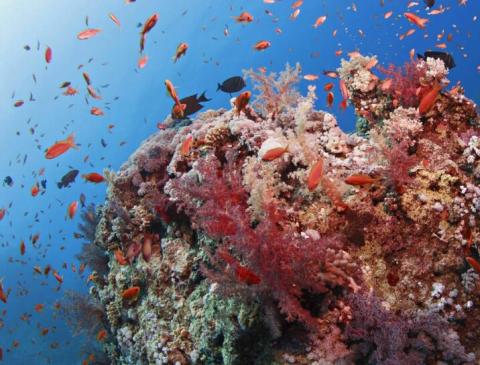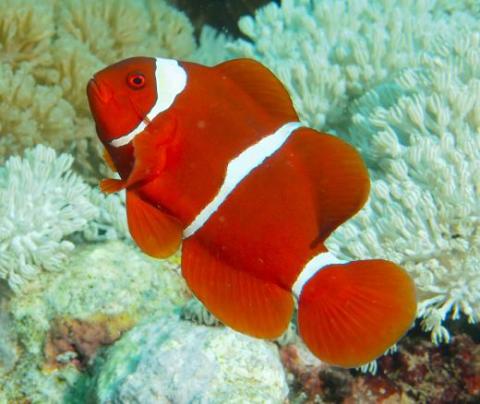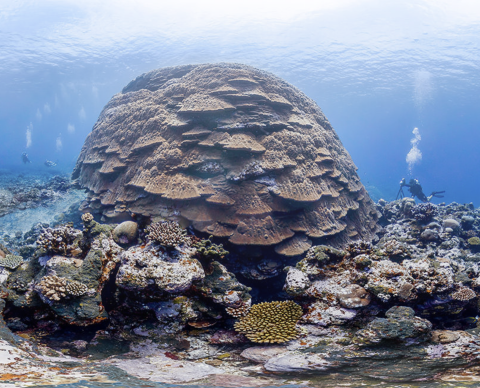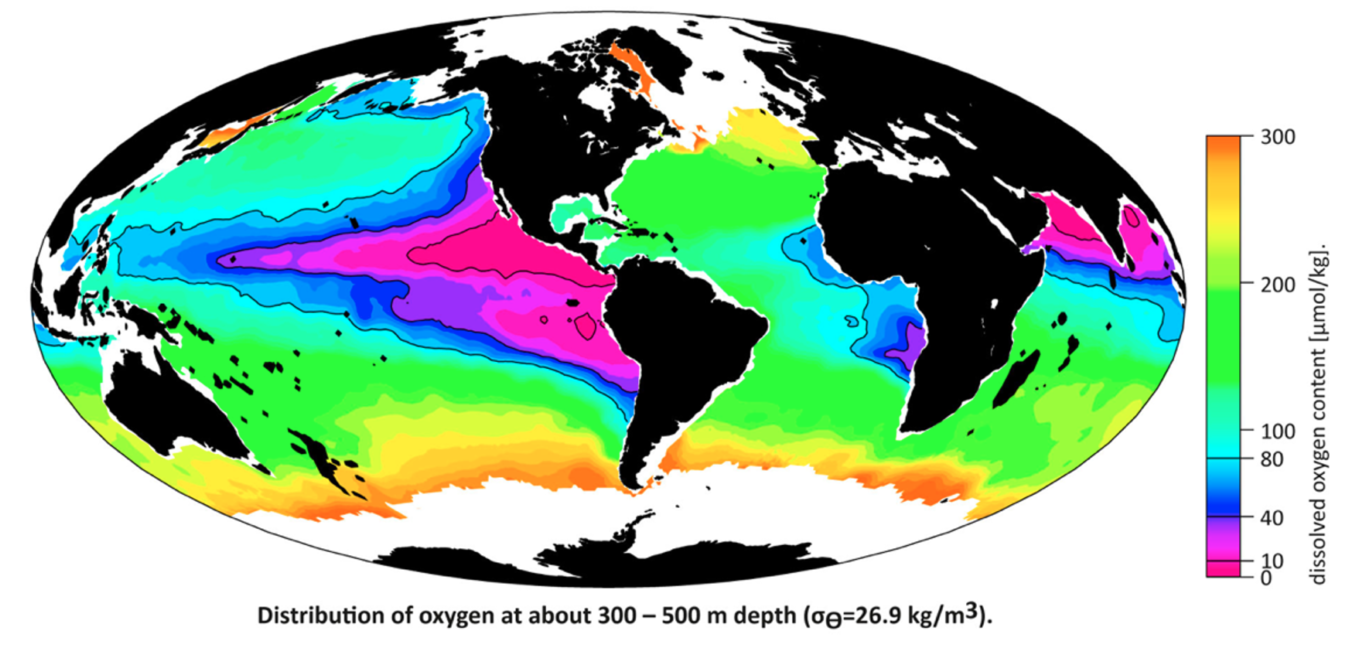
The pink and red show the low oxygen zones in the midwaters of the global ocean.
In the open ocean, global warming is the main cause of declining oxygen. Warm water holds less oxygen than cooler water, so a warming ocean will have less oxygen available for animals to breathe. The decline in oxygen is already happening in some places and will get worse over the coming decades. From the 1950s to the present oxygen levels in the global ocean have declined by 2%. More recently, models estimate that global oxygen concentrations may decline by as much a 7% by the year 2100.
The decrease in oxygen is not the same everywhere: in some parts of the tropics there has been a 40-50% decrease.
Oxygen is essential for all life in the ocean, so it’s decline will have serious ecosystem impacts. While some animals will suffocate and die, others will move to areas with more oxygen, disrupting entire ecosystems. By 2080 around 70 percent of the world's oceans could be suffocating from a lack of oxygen. This will potentially impact marine ecosystems worldwide, according to a 2022 study. The new models find mid-ocean depths that support many fisheries worldwide are already losing oxygen at unnatural rates and passed a critical threshold of oxygen loss in 2021.
Understanding the unique effects of oxygen depletion is often difficult because both temperature and salinity can be in play. In a study of bottom communities in Baja California, MBARI scientists found in regions with extremely low oxygen levels there were fewer fish species. They discovered that both temperature and oxygen level were the most important factors determining the community structure.
Oxygen Minimum Zones
Normally mid-ocean depths have areas of low oxygen. Phytoplankton in the surface waters produce oxygen that supports a thriving community. But when that organic matter sinks, it uses up oxygen as it decomposes. This creates an oxygen minimum zone (OMZ) around 200 to 1,000 feet deep (60m to 300m). The water both above and below the OMZ contains more oxygen than within the zone. The OMZ is a normal phenomenon around the globe and it is important in defining the midwater community.
Global warming is predicted to make the OMZs larger not only because warmer water holds less oxygen, but also because the ocean will become more stratified. As the surface of the ocean warms, the warm water tends to stay at the surface preventing mixing with deeper layers. This prevents the transport of surface oxygen to the depths. Both these factors have caused OMZs to expand.
MBARI had found the top of the OMZ in Monterey Bay has expanded vertically by 60 to 80 meters. This has disrupted the midwater community. Some animals are now living closer to the surface where they are exposed to more predation. And expanding OMZs in tropical waters are disrupting fish distribution by concentrating apex predators at the surface making them more exposed to overfishing.
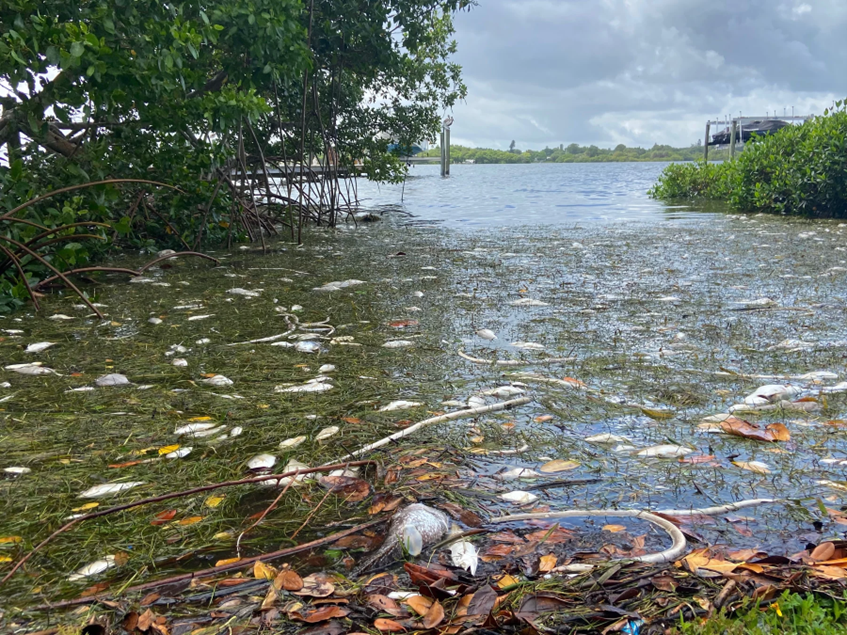
Dead zones
A warming ocean stimulates more phytoplankton growth. When the phytoplankton die, bacterial decomposition can use up the oxygen creating a dead zone. There are now more dead zones as the world warms.
In 2020 in an unseasonal event, more than 100 miles of Florida’s coast around Tampa Bay became an oxygen-depleted dead zone littered with fish along the shoreline. In fact, dead zones are increasing throughout the Gulf of Mexico.
A ‘blob’ of warm water, unprecedented in magnitude and duration, formed in the North Pacific from 2014 to 2016. Toxic algal blooms fueled by the warming ocean caused a drastic decrease in oxygen in the waters off the west coast disrupting entire ecosystems.
In 2020 lobster fishermen in Cape Cod were pulling up traps filled with dead lobsters. The bottom waters were depleted of oxygen killing the lobsters.
Ocean acidification can be an additional stress on fish experiencing hypoxia, causing higher mortality.
The Future
In the future about 80% of oxygen loss will occur below 2000 meters depth. At this depth the circulation is slow so the animals living there use up the oxygen before it can be replenished.
Not all is dire because sponges have been found to be quite tolerant of low oxygen. They may be the winners in both the shallow and the deep ocean. This is a good thing because they build reefs creating habitat for other organisms and they may even replace coral reefs.
